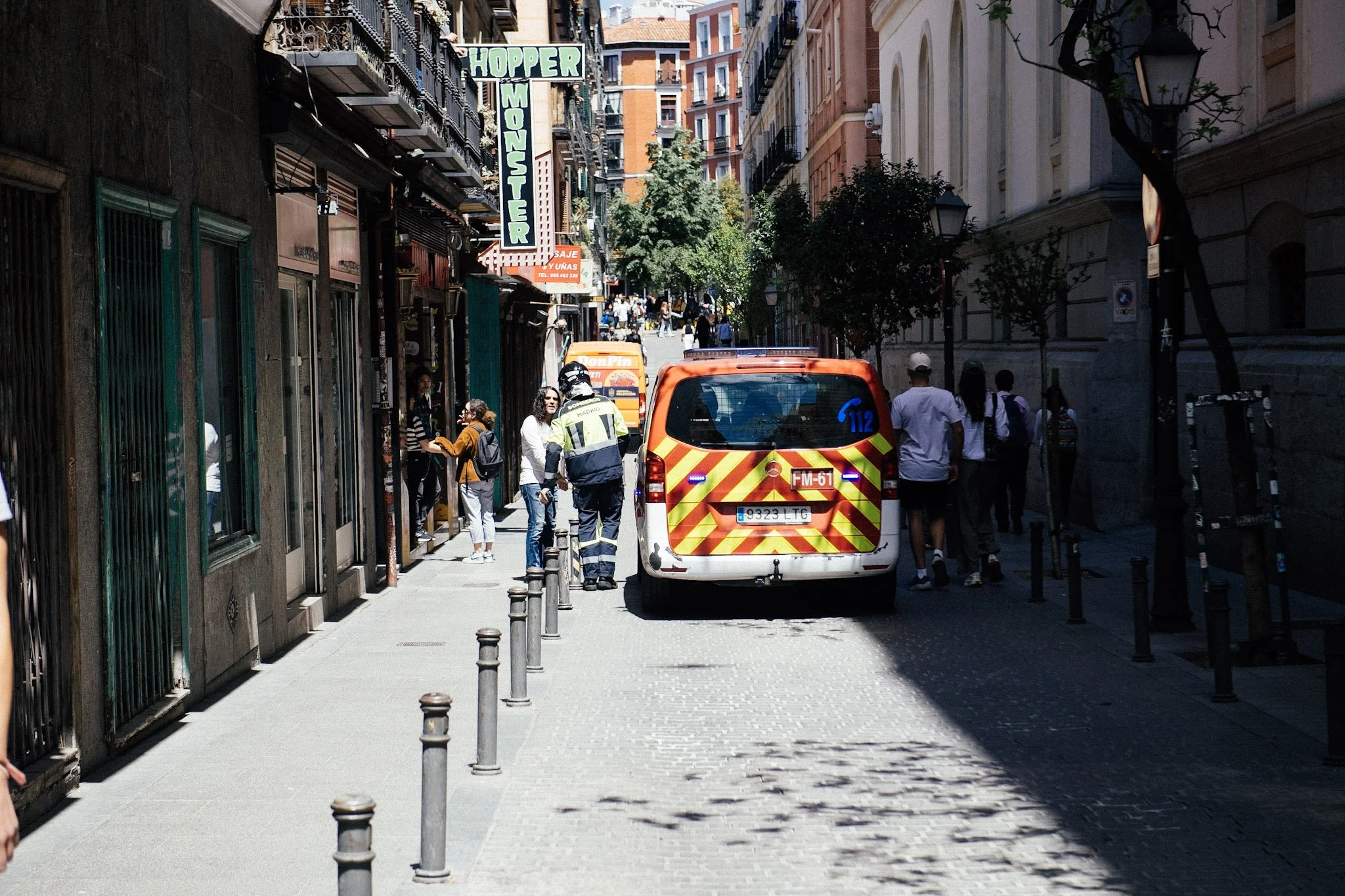The Night Madrid Saw the Stars
As far as I can tell, this was the first time since the end of the Spanish Civil War (1936–1939) that Madrid experienced a widespread nighttime blackout, allowing the night sky to become visible again.
Yesterday at 12:30 PM, a massive blackout hit all of Spain, Portugal, and parts of France. At first, I thought it was just my apartment—but that theory didn’t last long. Cell reception was also down.
I walked toward an open area and managed to get a few bars of signal, just enough to briefly access the internet and make a couple of essential calls. But that too disappeared quickly. Despite everything, life around me still looked normal. People were out having lunch, chatting, holding meetings on terraces, as if nothing unusual had happened.
Near Plaza de Santa Bárbara, some office workers took their laptops and meetings outdoors to make the most of daylight and mobile hotspots.
Traffic quickly turned chaotic. With traffic lights out and people being let out of work early, the streets became gridlocked. Traffic police were overwhelmed. I heard stories of people taking more than five hours to get home.
At Glorieta de Bilbao, traffic became paralyzed, with vehicles stuck circling the roundabout, unable to move due to the lack of signals.
Supermarkets closed their doors. The few that remained open were packed with people trying to stock up on food and supplies in case the outage dragged on. Shops selling radios and flashlights moved their business to the sidewalk, forming long lines of customers.
At Lidl, the line of customers wrapped around the building. By around 4:30 PM, the store closed after selling out much of its inventory.
Several shops couldn’t lower their electric rolling shutters and instead barricaded their entrances with boxes and furniture to signal they were closed.
Emergency services were out in full force. Firefighters, ambulances, and police vehicles crisscrossed the city. It’s easy to imagine how many people were trapped in elevators.
The main source of information was the radio. Since most people don’t own portable radios anymore, some car owners tuned in and left their windows down or doors open, allowing groups of people to gather around and listen to the news.
A classic Mini Cooper parked on the curb broadcast the news on its radio for several hours, drawing a small crowd.
One man wearing a helmet stayed beside his high-end bike while relaying radio updates for passersby to hear—never letting the bike out of his sight.
When it came time to eat, pizza places with wood-fired ovens were essentially performing a public service. They served hot food mainly to tourists who were clearly unprepared and unable to cook in their accommodations.
Nightfall
The sun sets late in Spain—it was past 10 PM and there was still a faint glow on the horizon. But once that was gone, the city went completely dark. I know some neighborhoods got their power back earlier, but by the time my phone started charging again, I was already asleep.
I was a bit concerned there might be looting in the dark, but police cars were patrolling the streets constantly—passing by every few minutes. That made me feel safe enough to go for a walk with my camera.
A police car slowly patrolled through a pitch-black Malasaña, its headlights the only light on the street.
One block away there was electricity, but Malasaña remained in total darkness. It felt like a black hole had swallowed the neighborhood.
As darkness set in, candles began appearing in windows. People gathered on their balconies, reminiscent of the early pandemic days. But the most amazing part? For the first time ever, I could see a clear, star-filled sky over central Madrid.
With the city lights gone, the stars reclaimed the sky—something almost never visible in Madrid. In the middle of the blackout, at least there was this quiet moment to enjoy.











